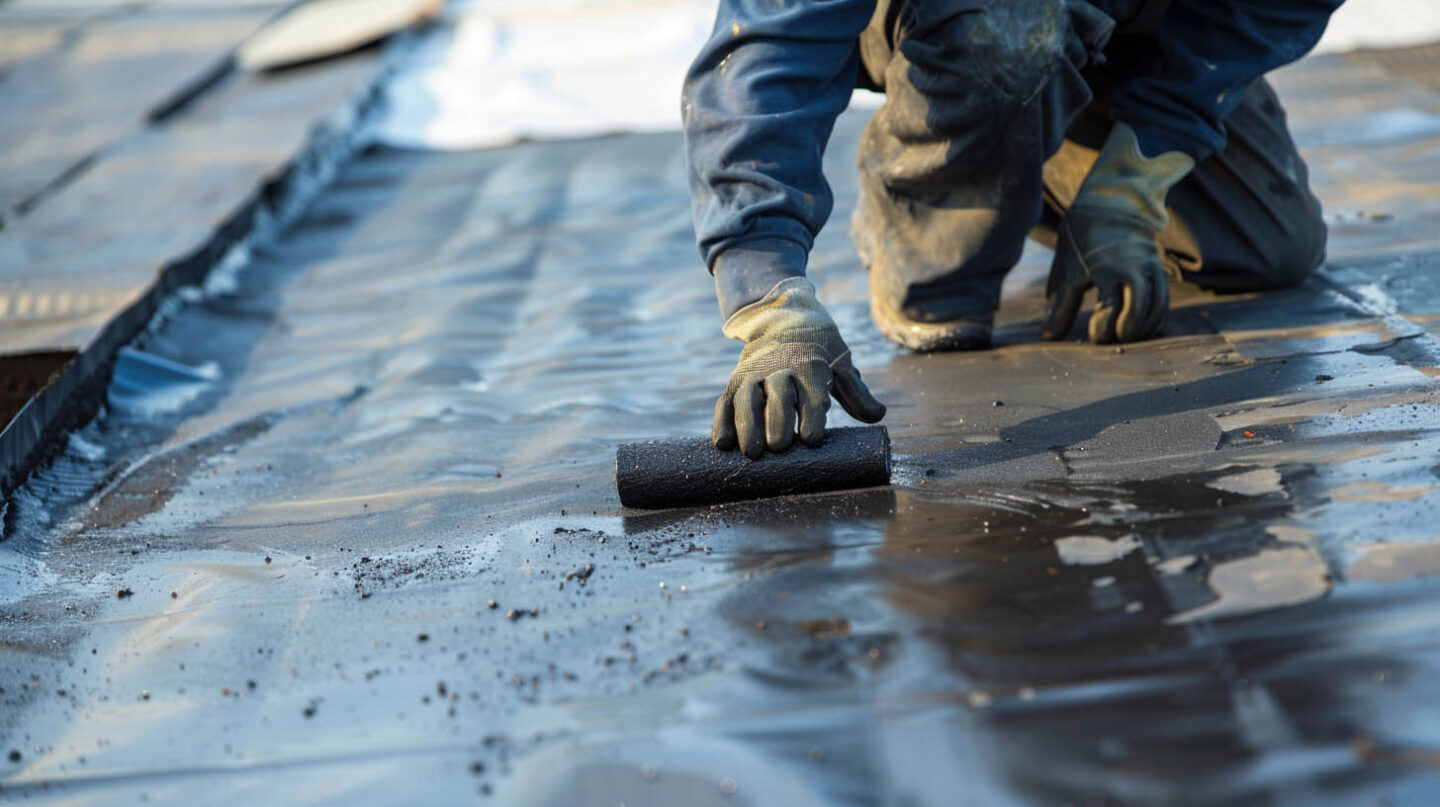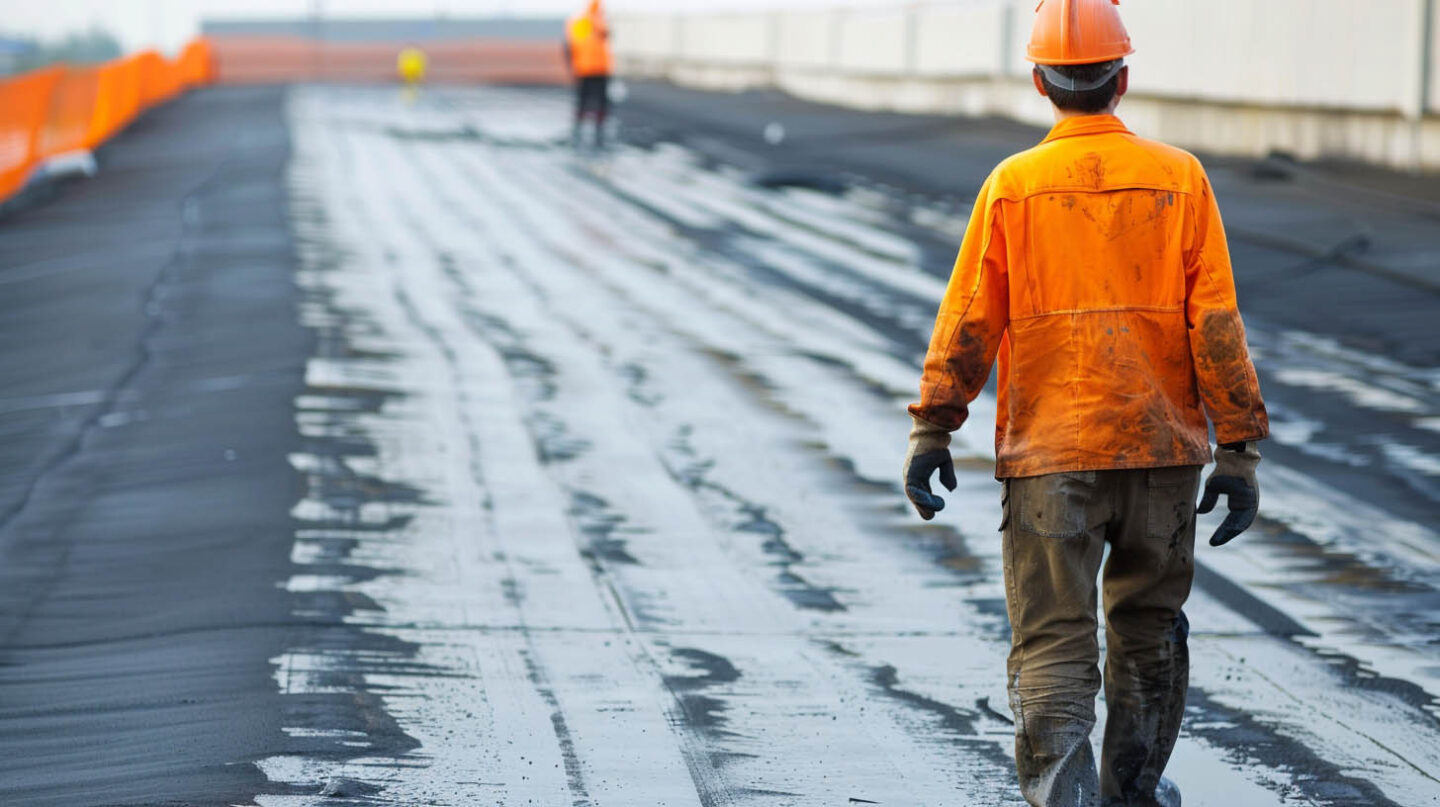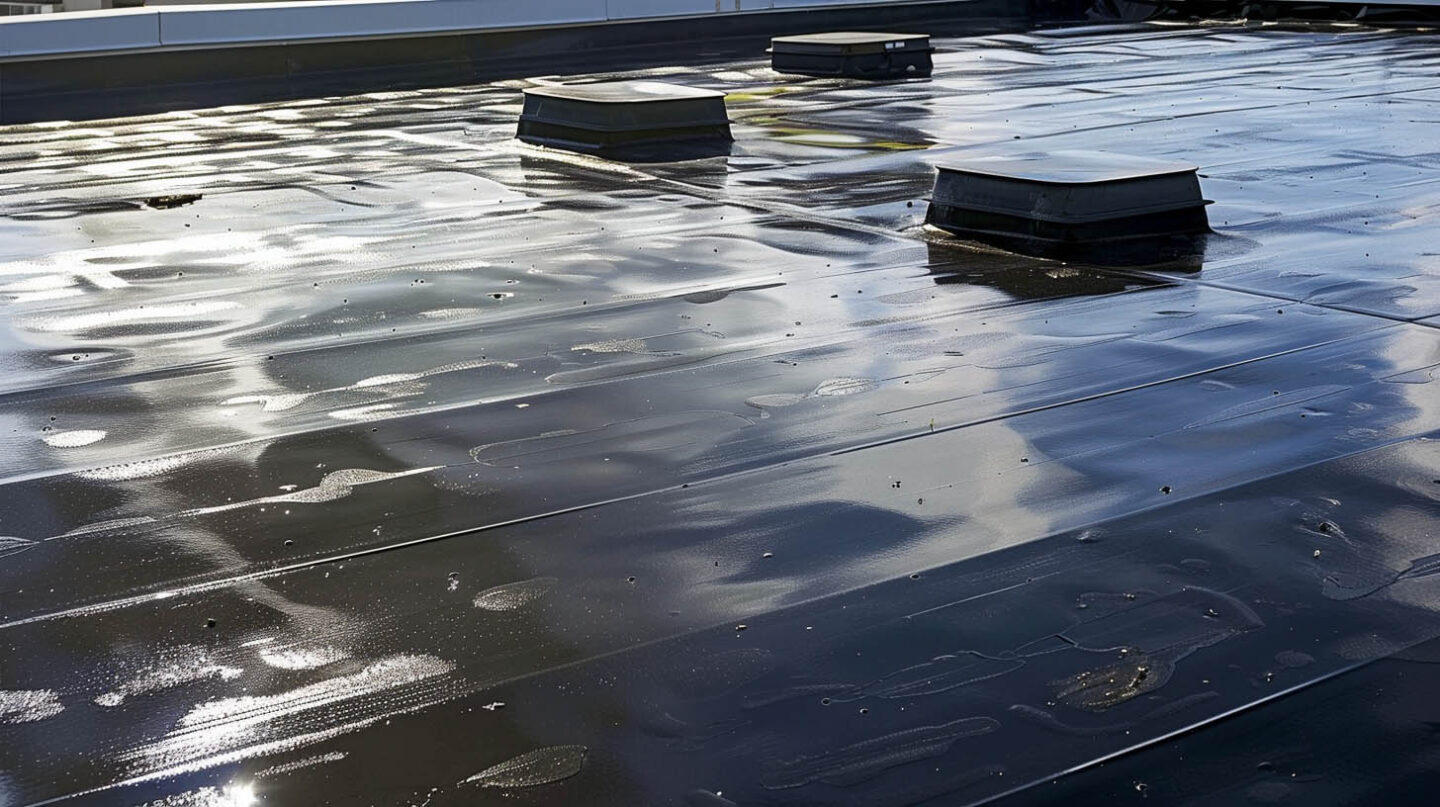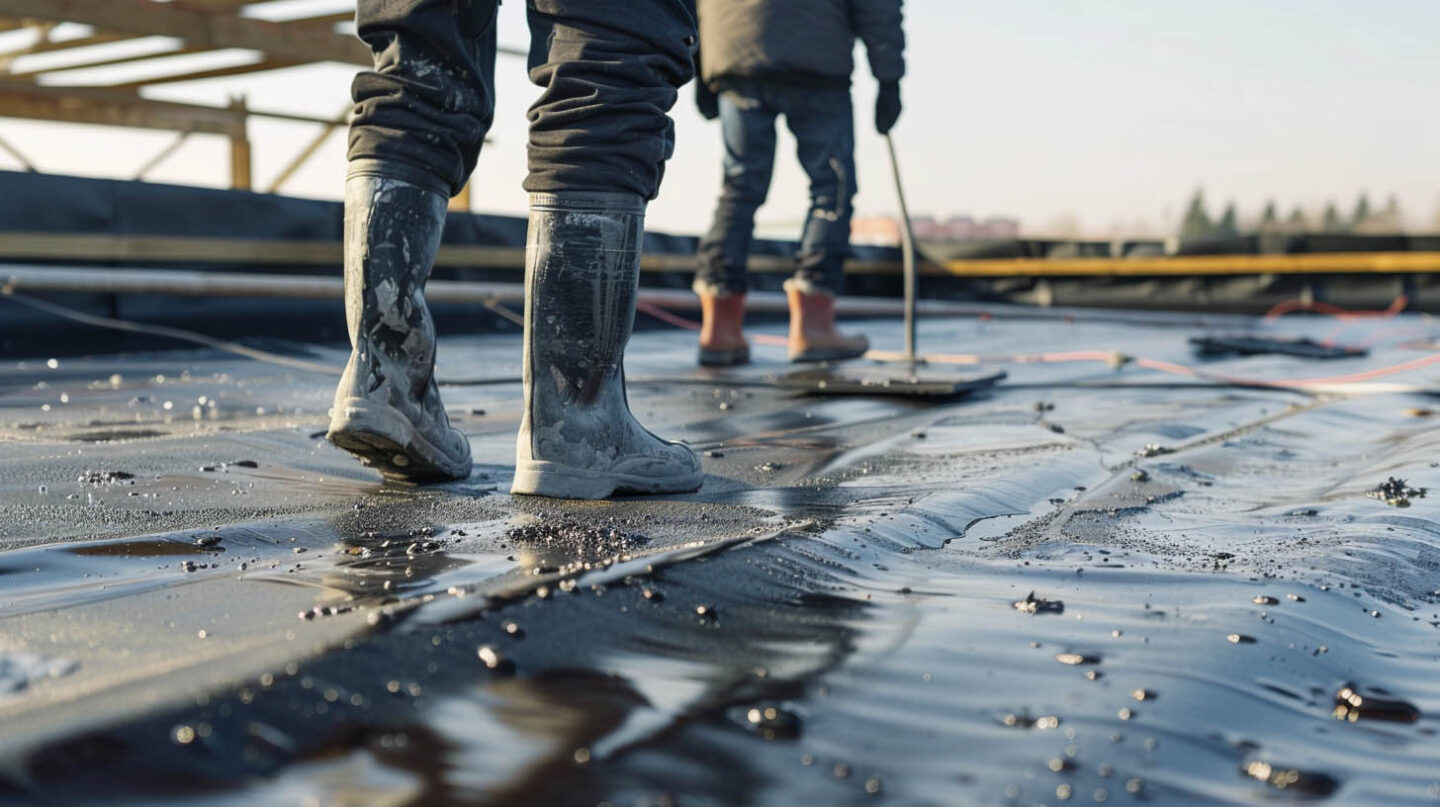When a roofing leak appears, your first instinct might be to find the fastest and cheapest solution available. A petroleum-based roof coating can seem like an attractive quick fix, promising to seal the problem and extend the life of your roof. But is this really the best way to protect your home? While these sealants offer immediate, visible results, often hide long-term risks that can compromise your roof’s integrity. At The Shingle Master, we understand the importance of reliable roofing solutions in Durham, NC. Our experienced team is dedicated to providing high-quality repairs and long-lasting results, ensuring your roof is not only fixed but also protected for the future.
Understanding Petroleum-Based Roof Sealers
Petroleum-based roofing sealers are typically formulated from volatile organic compounds (VOCs) and waterproofing agents, designed for immediate performance. These coatings provide a protective barrier against moisture infiltration, addressing leaks effectively in the short run. Commonly utilized in various roofing materials, including asphalt shingles and metal roofs, they serve as a quick fix for homeowners facing urgent repairs. However, while they can enhance the energy efficiency of your existing roof temporarily, it’s crucial to consider their long-term implications on durability and structural integrity.
What Are Petroleum-Based Roof Sealants Made Of?
Petroleum-based roof sealants primarily consist of asphalt, oils, and polymers. These ingredients create a water-resistant barrier, providing an effective seal against leaks. However, their composition also means they can deteriorate over time, leading to potential long-term issues for roofing systems.

Common Uses in Residential Roofing
Versatile in application, petroleum-based roof sealers are commonly employed for repairing leaks and protecting surfaces in various residential roofing scenarios. Homeowners often choose these sealers for their ease of use on asphalt shingles, metal roofs, or other roofing materials, providing a quick fix to extend the life of the roof. However, their role doesn’t stop at immediate repairs; they are frequently applied as a preventative measure to enhance energy efficiency and limit moisture infiltration, thus preserving the structure beneath.
The Short-Term Appeal of Petroleum-Based Roof Sealers
It’s easy to see why petroleum-based sealers have some appeal. When you’re faced with a leak, the promise of a quick fix that doesn’t break the bank is incredibly tempting. These products offer immediate, visible results that can provide a temporary sense of security and help you avoid the higher upfront cost of a professional repair.
This combination of speed and apparent cost advantages makes sealants a popular choice for many. However, these initial benefits often mask deeper problems. Let’s examine the appeal of quick fixes and upfront savings more closely.
Quick Leak Fixes and Immediate Results
Immediate results from petroleum-based roofing sealers often appeal to homeowners facing leaks. These products can quickly seal minor issues, providing a temporary respite from moisture ingress. The quick fix allows for immediate peace of mind while buying time for potentially more extensive repairs. However, this rapid solution may conceal underlying issues that, if left unaddressed, contribute to structural damage and reduced lifespan of the roofing material. Opting for a long-term strategy, such as acrylic coatings, may ultimately offer better durability and energy efficiency.

Cost Advantages — Upfront Savings
Significant upfront savings frequently draw homeowners to petroleum-based roof sealers. Their relatively low cost per square foot makes these sealers an attractive option for immediate budget relief, especially for those seeking quick fixes for leaks. While this short-term financial allure can be compelling, it’s essential to weigh these advantages against the potential long-term costs of maintenance and degradation, which could lead to a full roofing replacement. Investing in more durable alternatives may ultimately provide a more economical choice for the life of your roof.
Hidden Risks: How Petroleum-Based Sealers Fall Short Over Time
Over time, the use of petroleum-based sealers can lead to significant degradation of roofing materials. While they may offer a quick fix for leaks, their volatile organic compounds can cause structural damage and reduced energy efficiency. As these sealers age, they may also contribute to granule loss, compromising the integrity of asphalt shingles and other roofing materials. Ultimately, what starts as an inexpensive coating can result in costly repairs or even a complete roofing replacement, endangering the overall lifespan of your roof.
Degradation and Reduced Roof Longevity
Over time, petroleum-based roof sealers can lead to significant degradation, adversely affecting the lifespan of your roofing material. The volatile organic compounds present in these sealers may provide a quick fix, but they often result in structural damage beyond just leaks, accelerating issues like granule loss in asphalt shingles. Long-term exposure to moisture can exacerbate underlying problems, ultimately necessitating a complete roof replacement and compromising the overall energy efficiency of your home. Homeowners should seek more durable alternatives.

Potential Damage to Roof Structure
Over time, the use of petroleum-based roof sealers can lead to significant structural damage. These sealants often contain volatile organic compounds (VOCs) that degrade the integrity of roofing materials like asphalt shingles and metal roofs. Moisture retention beneath the coating can exacerbate underlying issues, promoting mold growth and weakening the roof’s support system. While providing a quick fix initially, the long-term risks associated with these sealants can ultimately compromise the life of your roof, leading to costly repairs or even a complete roof replacement.
Get in Touch
In evaluating petroleum-based roof sealers, one must consider the trade-offs between immediate benefits and long-term consequences. While quick fixes may provide temporary relief from leaks and an upfront cost advantage, the potential for structural damage and limited lifespan cannot be overlooked. Homeowners should weigh these factors against the durability of other options, such as acrylic or silicone coatings. For peace of mind and a robust roofing solution, exploring alternatives that enhance energy efficiency and extend the life of your roof may be the best option.
Frequently Asked Questions
How long do roof sealants last?
The lifespan of a roof coating typically ranges from 5 to 10 years, depending on the material. Products like acrylic, polyurethane, or silicone coatings degrade over time due to weather exposure and will require reapplication to remain effective, leading to recurring maintenance costs.
Is roof sealant a good idea?
Generally, applying a sealant to an existing asphalt shingle roof is not the best option. While it’s a quick fix, it can trap moisture, void manufacturer warranties, and conceal underlying damage. A professional inspection to find the root cause of the issue is a much safer and more effective approach.
How often should you seal your roof?
How often a roof coating needs reapplication depends on the product. For instance, some acrylic roof coatings suggest a new coat every 5-7 years. However, for asphalt shingles, sealing is not recommended. It is better to invest in proper repairs that protect the full life of the roof.
Read our blog: Roof Financing Options: APR, Terms, and Red Flags


